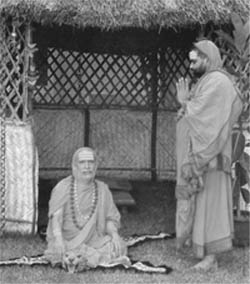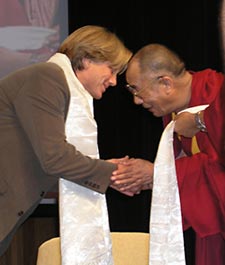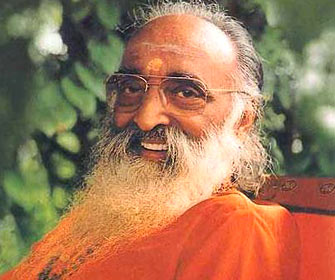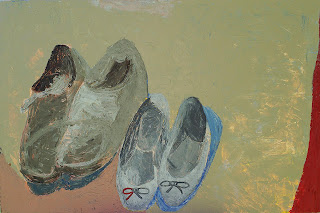I remember once having a conversation at one of the two spiritual retreats I have attended. The man I was talking with had the view that realization was beyond the mind. "Why do you think we use the term realization?" I asked.
***
But what is realization? The upaniShad-s describe realization in terms of the macrocosm and the microcosm by using the word brahman to refer to the former and the word Atma to refer to the latter. Realization is realization of Atma-brahman. But then we may ask, "Who realizes?"
A person realizes, of course. The realization, as with every other realization, occurs in the mind - and is not limited by any manifestation, including that of the manifest person.
You do not have to take my word for this. Consider this quote from the kaTha upaniShad: "This brahman is attained through the mind alone. There is not diversity in brahman."
***
It is possible to object to the point I have just made by citing another shruti. The taittirIya upaniShad states, "Failing to reach which, words turn back along with the mind."
Here we have to consider that this shruti phrase is in fact comprised of words that we are reflecting on with our minds. So our next question may be, "Is this an example of contradiction within the Scriptures?"
The key here is that these shruti passages are addressing two different dimensions of our minds. The passage I just cited from taittirIya is addressing mind in its lower sense as manas, while the first passage, from kaTha upaniShad, is addressing mind as buddhi (the intellect).
***
Coming back around to the conversation I had at that retreat, the upaniShad-s actually support the view that realization occurs in the mind. But the mind has to be raised from its valleys and plains to its greatest height, its peak. And a mind can only ascend to this peak if it is fit.
The reason so many misread this important teaching and cling to misinterpretations of shruti passages, is precisely because the mind is by nature unfit. It must be made fit through diligent and focused effort.
The instances that would seem to give lie to this assertion can be explained easily when we consider that the diligent and focused effort may have been made in a previous lifetime. There is a widely-known passage of conversation with
shrI Ramana Maharshi, in which the Maharshi was questioned about not having a guru. His reply was, "I may have had a guru at some time or another, and didn't I sing hymns to Arunachala."
I discovered vedAnta after the publication of
words from an empty boat. I was gradually oriented to classical advaita teaching shortly afterwards, through the writings of
Dennis Waite, the Italian sage
Raphael and the
jagadgurus of Sringeri.
Meditation upon such steady wisdom has made it possible for me to become a little more clear on the fine points of wisdom. But I should specify that the clarity is not the result of a vague 'spontaneity'. Nor is the fruit of mere nondualist autosuggestion. Rather it is the result of bringing my mind into harmony the words of the wise.
***
If it is possible for me to have some success in this, it would have to be possible for anyone else to have similar success. But the voices of distraction are innumerable. I spent years distracted by the hope of saying something unique, of somehow adding to wisdom or of discovering some new facet of wisdom. In the back of my mind, I was puffed up with these kinds of thoughts. It took time and effort to get some distance from them.
***
Without overcoming egotism, it is not possible to experience peace of mind. As another passage from kaTha upaniShad states, "Not by him who has not desisted from evil conduct, who does not possess shama, etc., who has not collected, who does not have a mind at peace can this be attained by praj~nA alone."
Egotism holds the mind to manas. However, by overcoming egotism, we are more readily able to ascend to the intellect, and in this way meditate upon the profound truths, such as those revealed by the Scriptures and the wise through words.
In short, although words and the mind "turn back" from Reality, they are also central to Its realization. Where the mind and words intersect, knowledge of whatever order is possible. As the aitreya upaniShad states, "The world is lead by knowledge. Knowledge is the basis. Knowledge is brahman."
















.jpg)














